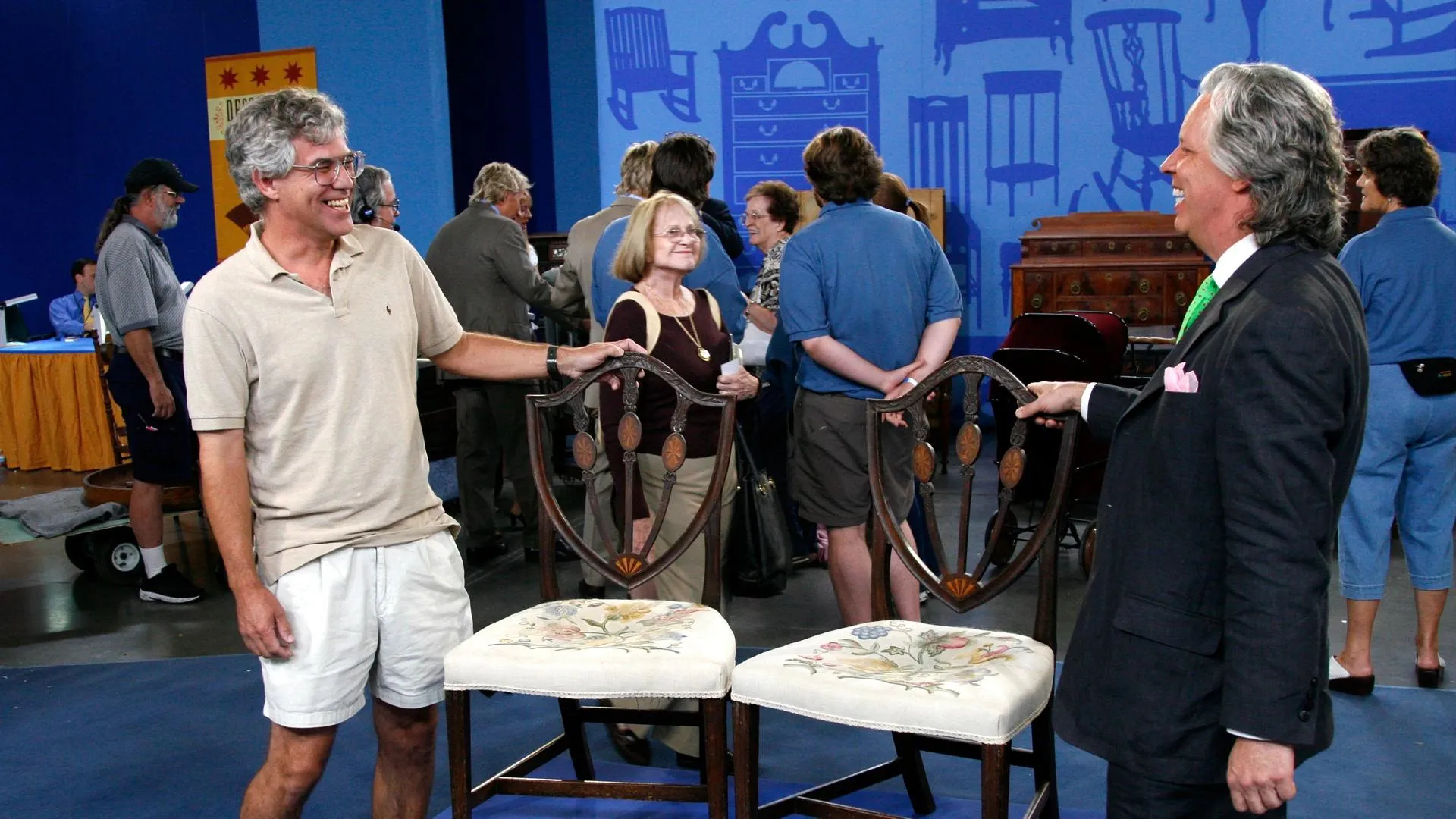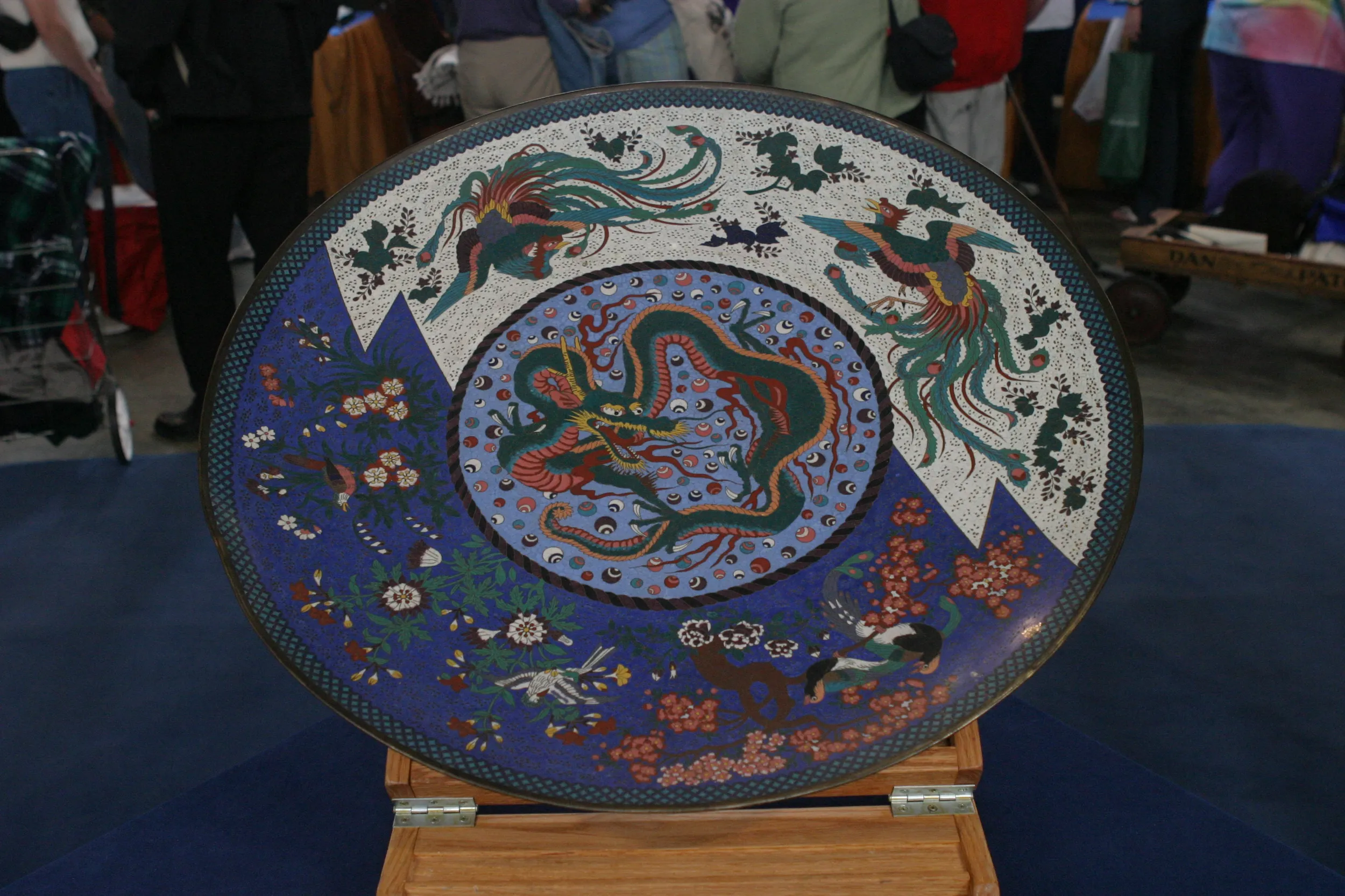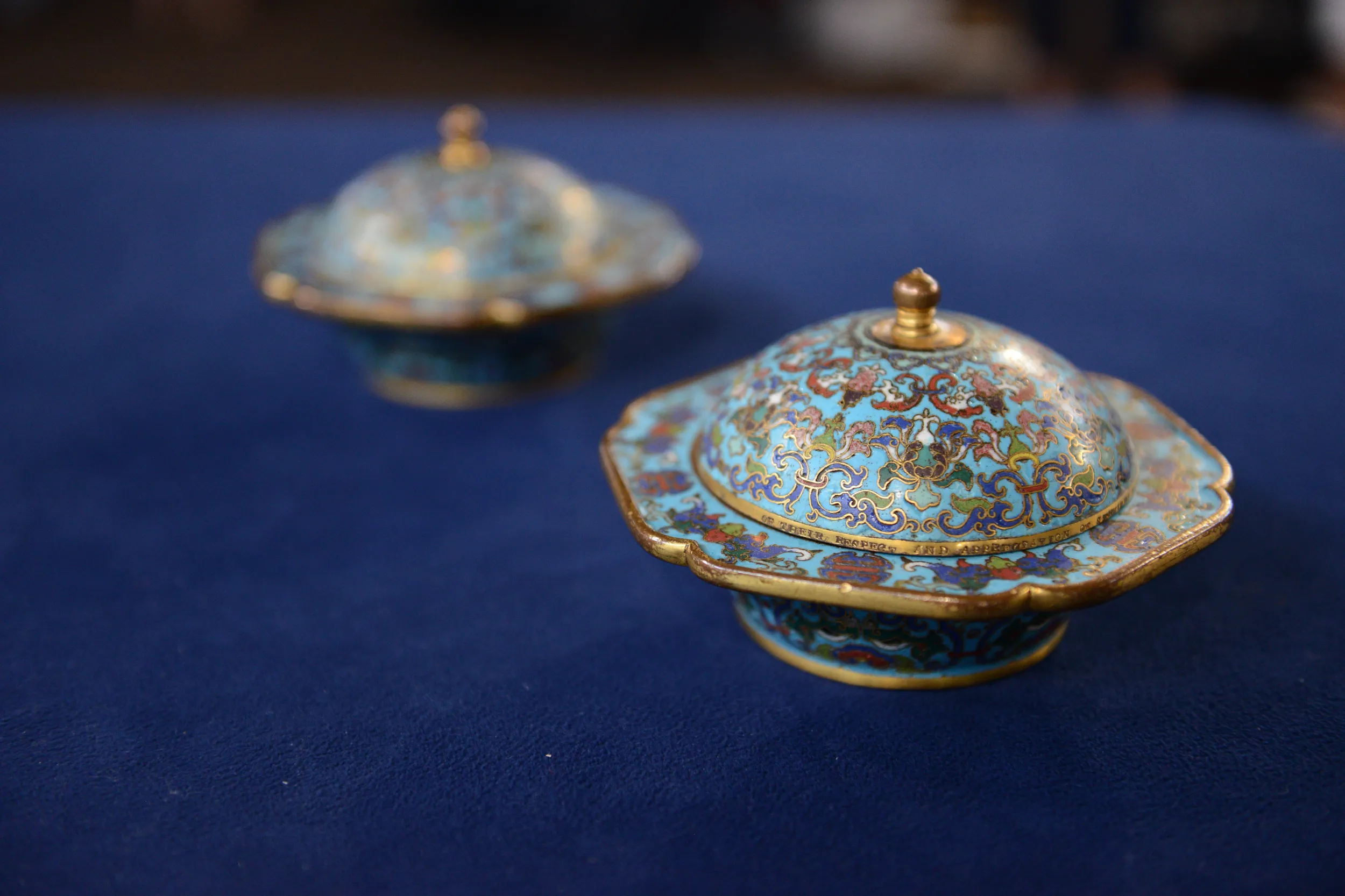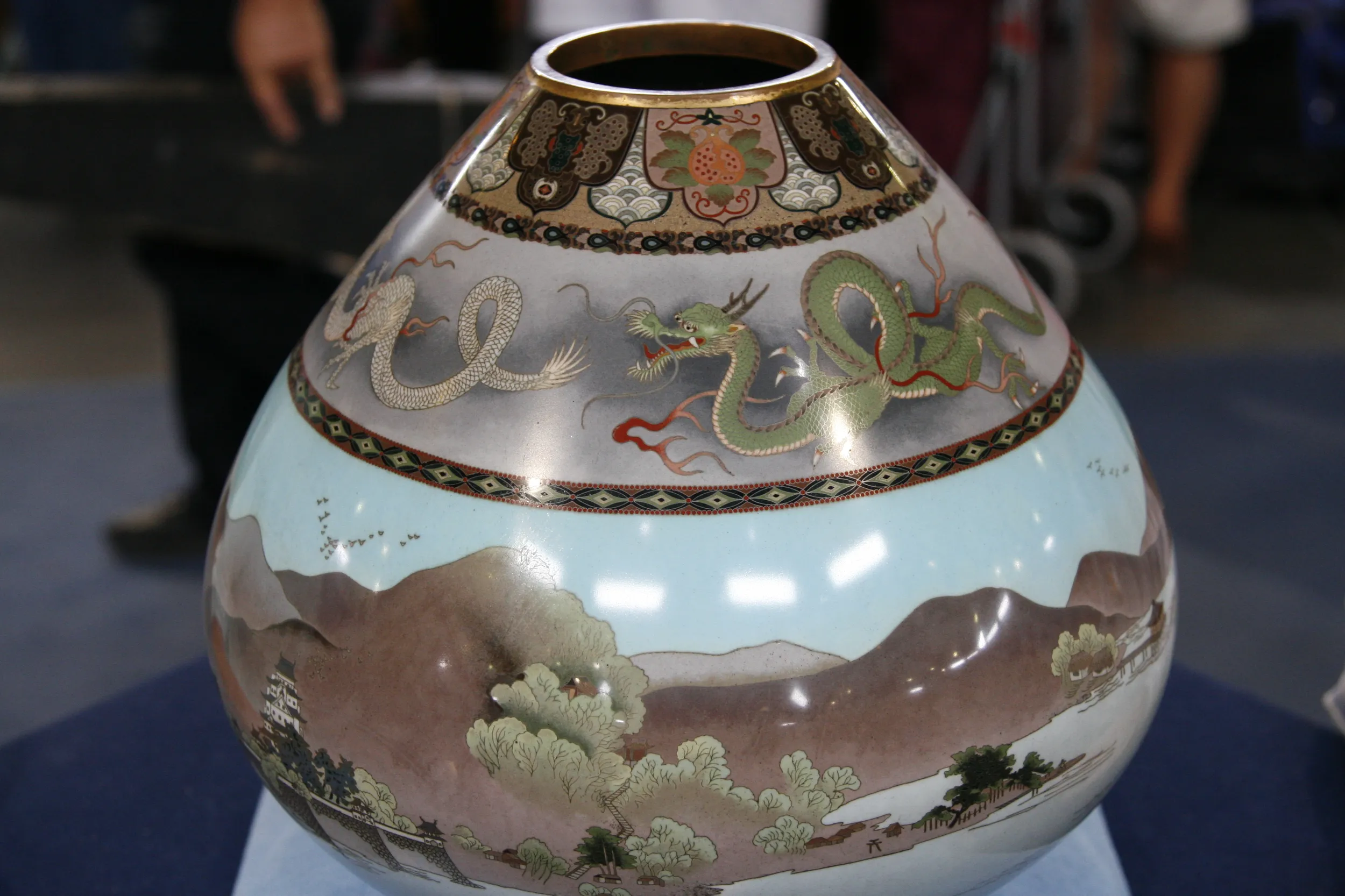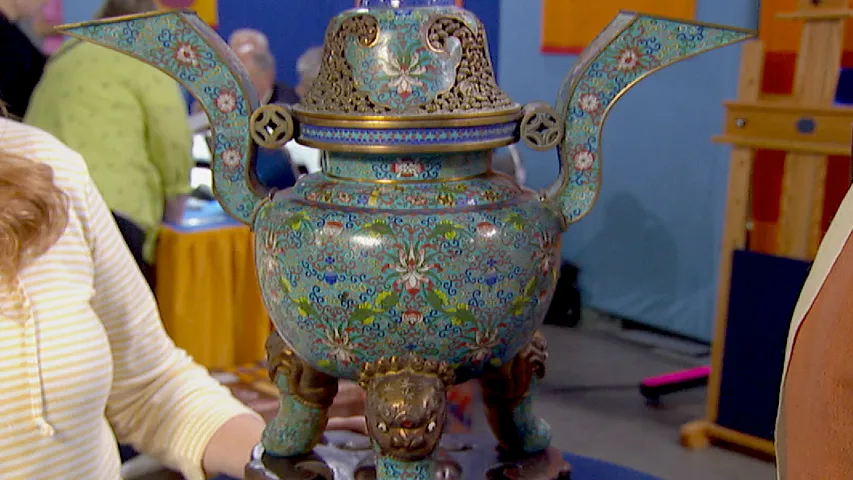GUEST: I was traveling in England in 1969, and my wife and I are antique buffs. And we were fortunate enough to run across this piece at a dealer in Burnley, England, and I liked it. My wife thought it was actually porcelain, and I said, "No, it's cloisonné." She said, "No, it looks like porcelain," and I said, "No, it's cloisonné." And I won.
APPRAISER: (laughing): That's great. Well, do you know how old this piece is?
GUEST: I was told it's approximately 100 to 110 years old.
APPRAISER: That's about right. You know, when I saw you in line, I got really excited because this is a potentially wonderful research project. Until the Meiji Period, cloisonné was made in Japan, but it was at the beginning of the Meiji Period, from 1868 onward, when Japan opened to the West, that, really, the golden age of cloisonné enamel began. And two of the greatest artists in this period were unrelated, but shared the same surname: Namikawa Yasuyuki and Namikawa Sosuke. Now, Namikawa Yasuyuki founded a cloisonné factory in 1871 in Kyoto, and worked with a German scientist in order to perfect the problems that they were encountering in cloisonné, which, you can see fantastic results on this piece. They learned how to do broad expanses of cloisonné enamel without wires, so that it lay flat on the surface, and also to create a painterly technique, as we see in this wonderful landscape of boats and pavilions and pines and waterway, depicted throughout this marvelous vessel. So Namikawa Yasuyuki was famous for his scientific innovations in that area, and also in fine-wire cloisonné as we see in this brocade band up here... throughout the top, these marvelous dragons... and the depictions and the lines delineating this landscape decoration. Now, Namikawa Sosuke was famous for his wireless technique. And the real question I'm confronting is, is it Sosuke or is it Yasuyuki? What did you pay for this piece?
GUEST: Well, my wife was fighting with me because she thought I paid too much. I paid $125 for it.
APPRAISER: Currently, I would put an auction estimate of between $15,000 to $25,000 on this piece.
GUEST: I guess my investment was well... ventured.
APPRAISER: It's a marvelous example and a wonderful, wonderful potential lost piece.
GUEST: Thank you very, very much.
APPRAISER: Thank you. Thank you.

